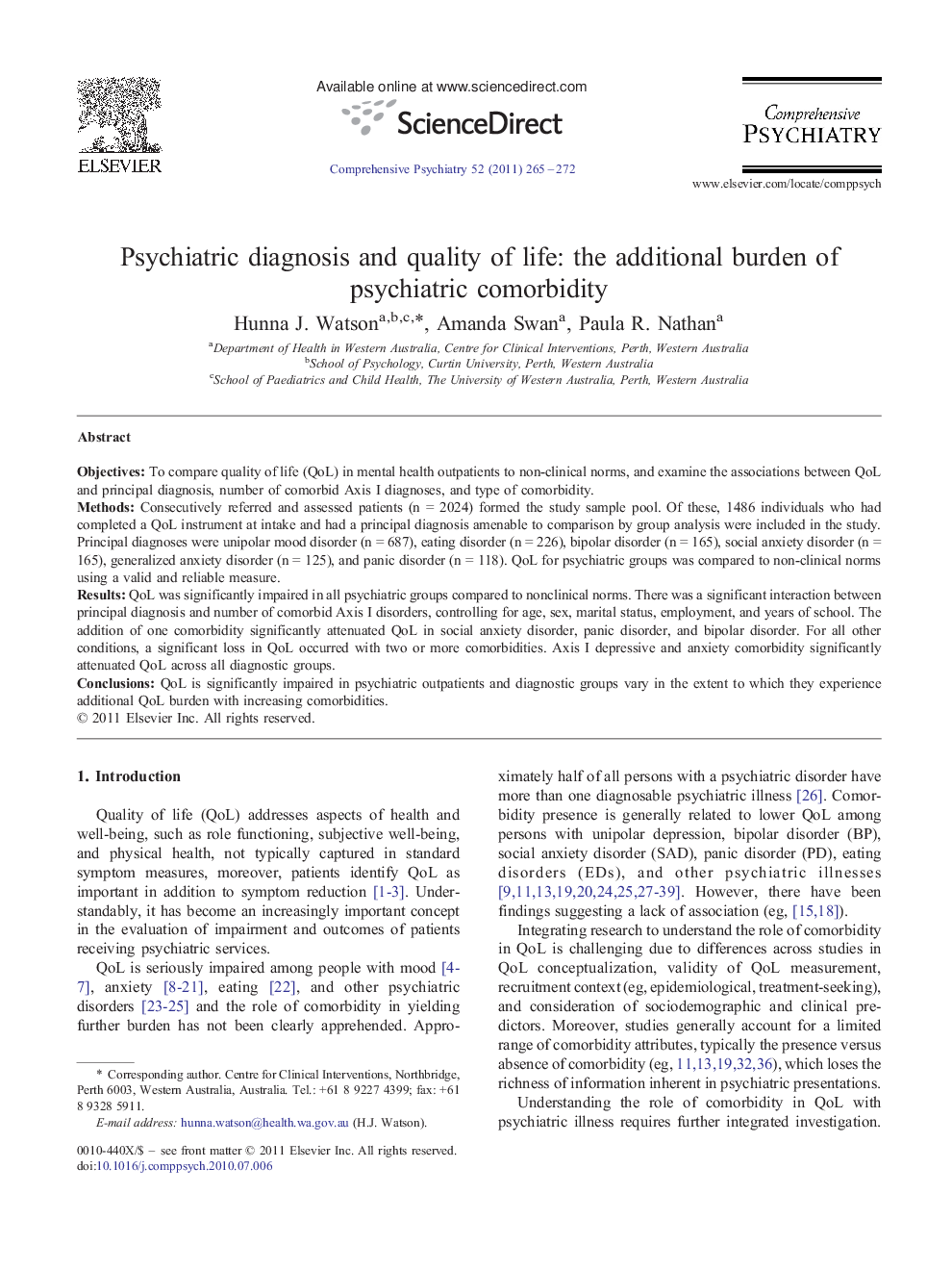| Article ID | Journal | Published Year | Pages | File Type |
|---|---|---|---|---|
| 317755 | Comprehensive Psychiatry | 2011 | 8 Pages |
ObjectivesTo compare quality of life (QoL) in mental health outpatients to non-clinical norms, and examine the associations between QoL and principal diagnosis, number of comorbid Axis I diagnoses, and type of comorbidity.MethodsConsecutively referred and assessed patients (n = 2024) formed the study sample pool. Of these, 1486 individuals who had completed a QoL instrument at intake and had a principal diagnosis amenable to comparison by group analysis were included in the study. Principal diagnoses were unipolar mood disorder (n = 687), eating disorder (n = 226), bipolar disorder (n = 165), social anxiety disorder (n = 165), generalized anxiety disorder (n = 125), and panic disorder (n = 118). QoL for psychiatric groups was compared to non-clinical norms using a valid and reliable measure.ResultsQoL was significantly impaired in all psychiatric groups compared to nonclinical norms. There was a significant interaction between principal diagnosis and number of comorbid Axis I disorders, controlling for age, sex, marital status, employment, and years of school. The addition of one comorbidity significantly attenuated QoL in social anxiety disorder, panic disorder, and bipolar disorder. For all other conditions, a significant loss in QoL occurred with two or more comorbidities. Axis I depressive and anxiety comorbidity significantly attenuated QoL across all diagnostic groups.ConclusionsQoL is significantly impaired in psychiatric outpatients and diagnostic groups vary in the extent to which they experience additional QoL burden with increasing comorbidities.
